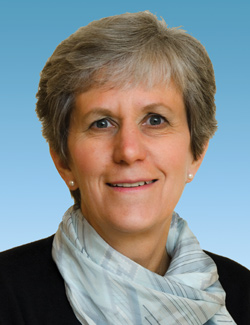The pursuit of any kind of perfection is a daunting task.
Earlier this year, I was entertained to come across a paper on the “Rheology of Swiss Cheese Fondue” (ACS Omega, doi: 10.1021/acsomega.8b02424). The authors of this article combined commercial cheeses with well-defined ingredients and ball-rheology metrics, producing recipes that were reproducible and could be correlated with such desirable qualities as bread-coating thickness and a “smooth” feel. While the article did not indicate any human testing of the products, it did propose correlations between storage modulus and “gumminess.” It was interesting to see scientific methods used in the pursuit of culinary perfection.
While I had expected to be amused, the fondue article proved informative. Our lab is working on colloidal coatings, and you can bet we’ll be looking at rheological characterization as a way to get closer to perfection in their application to glass.
The pursuit of any kind of perfection, though, is a daunting task. First you have to define it, find out what challenges may stand between you and the goal, decide the level of time and effort that’s appropriate to devote to the task, and in many cases determine what imperfect approximation is “close enough.” The question comes up in cooking, in the lab and even in simulations and modeling. Much of what we do now is digital/binary—but even with an analytical equation, we have to decide the precision with which we will present the results.
In the choice of optical materials, this task is also with us. What is the “perfect” laser host? Is it a crystal, with inherent entropically driven flaws (since absolute zero is impractical)? Or is it a glass? Is there such a thing as a “perfectly amorphous” system? Do we need, or want, high transitional cross-sections, or a broad spectrum? Is the thermal conductivity of the host a factor? Do we want to rely on atomic transitions, or move to a semiconductor device with a potentially larger photon output per volume? Just the first step—that of defining “perfection”—can be a challenge.
And does the definition of perfection change as we move to the nanoscale? For a bulk crystal, can one “get lucky” and find the bit without a flaw? Or does the inherent sensitivity of the system to a single displaced atom increase?
Looking further afield, how does perfection’s definition change with time—for example, at different phases of professional life? Putting your best foot forward is critical at some stages, whereas generosity and looking to the next generation might need to dominate at others.
That combination—the drive for perfection and shifting perspectives—are in the background in the “Career Focus” article in this month’s Optics & Photonics News, which explores the experience of three individuals at different career stages in the world of entrepreneurship. This month’s issue also includes articles on a range of other endeavors, from seeking ever faster and finer 3-D laser nanoprinting to the use of optics to improve our knowledge of the moon. These shed light on the many ways we can strive to be “perfect.”
Or, at least, close enough.
—Ursula Gibson,
OSA President

